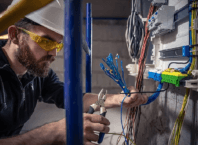Thermoforming trays are an integral part of various industries, from food packaging to medical supplies, owing to their versatility and practicality. This article delves into the details of these indispensable products, the benefits they offer, and their environmental footprint. As we traverse through the intricate world of thermoforming trays, you’ll gain valuable insights into their importance and how they impact our everyday lives.
Thermoforming trays have emerged as a revolutionary product in the packaging industry. They’re not only cost-effective but also offer unparalleled flexibility, making them a favorite among businesses across various sectors. These trays are created using the thermoforming process, which involves heating a plastic sheet until it becomes pliable, then molding it into a desired shape before cooling and trimming.
What sets thermoforming trays apart is their versatility. They can be customized to fit any product, from electronics to food items, ensuring secure packaging and optimal space utilization. Plus, they’re robust and durable, providing excellent protection for your valuable goods.
In an era where sustainability is paramount, these trays score big. They’re made from recyclable materials, making them an eco-friendly choice for businesses striving to reduce their carbon footprint. Moreover, their lightweight nature cuts down on shipping costs, providing a win-win solution for both the environment and your bottom line.
Designed to enhance the efficiency of your packaging operations, thermoforming trays streamline the packing process, saving you time and resources. They’re a testament to how innovative design can transform a simple process, creating a ripple effect of benefits that extends far beyond the packaging line.
Understanding Thermoforming Trays
Thermoforming trays are plastic trays made via a process called thermoforming. This process involves heating a plastic sheet until it becomes pliable, then shaping it into a specific form in a mold. The result is a sturdy, lightweight, and cost-effective product that can be tailored to fit numerous applications.
The Thermoforming Process
The thermoforming process begins with a flat plastic sheet, which is heated until it reaches a flexible state. The softened sheet is then placed on a mold and vacuum pressure is applied, drawing the plastic into the mold’s shape. Once cooled and hardened, the excess plastic is trimmed away, leaving a perfectly formed tray. This process is cost-effective, versatile, and allows for the creation of custom thermoforming trays to meet specific industry requirements.
The Benefits Of Using Thermoforming Trays
Thermoforming trays offer a host of benefits, making them a popular choice across various industries. They are lightweight, reducing shipping costs. Their durability makes them ideal for securing and protecting products during transportation. Their versatility allows them to be created in various shapes, sizes, and colors, meeting a wide range of packaging needs. In addition, the production process is cost-effective, making them an affordable option for businesses.
Industrial Applications Of Thermoforming Trays
From food packaging to electronics, thermoforming trays play a critical role in many industries. In the medical field, they are used for packaging sterile equipment and supplies, ensuring safety and hygiene. In the food industry, they are used for packaging fresh produce, prepared meals, and baked goods, providing protection and extending shelf life. In the electronics industry, they are used for packaging delicate components, offering protection from damage and static electricity.
The Environmental Impact Of Thermoforming Trays
Despite their numerous benefits, thermoforming trays do have an environmental impact. The production process consumes energy and emits greenhouse gases. Additionally, if not properly disposed of, these trays can contribute to pollution. However, many manufacturers are taking steps to mitigate these impacts, such as using recycled or biodegradable materials and implementing energy-efficient production methods.
Improving The Sustainability Of Thermoforming Trays
Recognizing the need for environmental responsibility, many manufacturers are exploring ways to improve the sustainability of thermoforming trays. This includes using recycled plastics in production, reducing waste during the manufacturing process, and developing trays that are biodegradable or recyclable. By taking these steps, the thermoforming industry is striving to balance the benefits offered by these trays with the need to protect our environment.
Conclusion
Thermoforming trays offer numerous benefits, from versatility to cost-effectiveness, making them a key player in various industries. However, as we continue to prioritize sustainability, it’s crucial for manufacturers to address the environmental impact of these trays. Through innovation and commitment, the thermoforming industry can continue to provide practical solutions while minimizing its environmental footprint.







